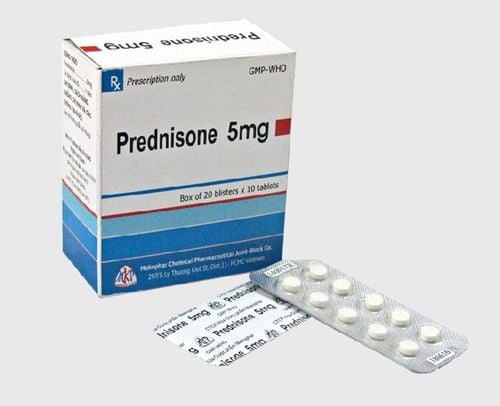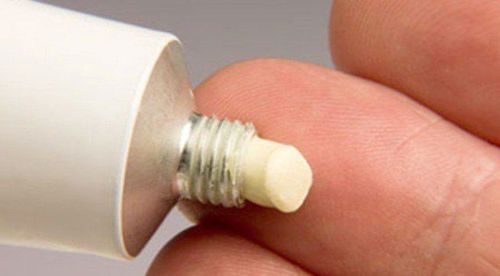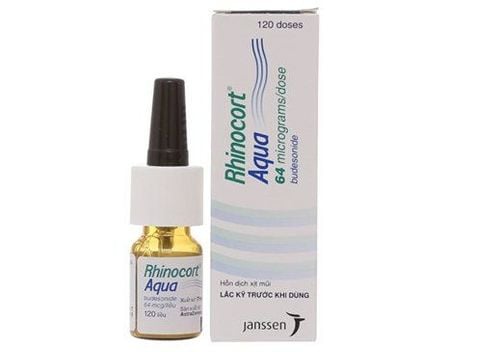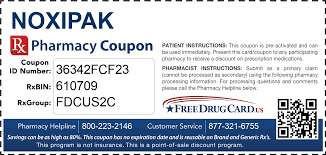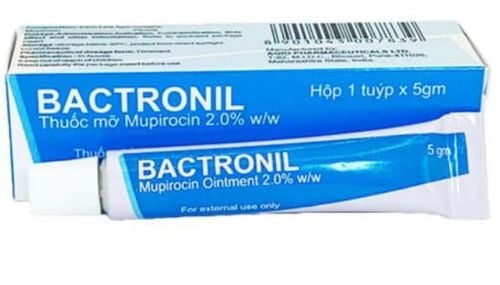This is an automatically translated article.
The use of topical corticosteroids brings effective anti-inflammatory and anti-itching effects. A product in this group is the drug Alclometasone cream or ointment that is widely circulated on the market today. So what is Alclometasone and how should it be used?
1. What is Alclometasone?
Alclometasone drug is prepared in the form of cream or ointment for topical application with the active ingredient Alclometasone dipropionate 0.05%, equivalent to 0.5mg in each gram of the drug. This is a type of synthetic corticosteroid for external use with the main effect of anti-inflammatory and anti-itching.
In terms of chemical structure, the active ingredient Alclometasone dipropionate has a molecular weight of 521.04 g/mol, is a colored crystalline powder, slightly soluble in alcohol, acetone, ethyl acetate and acetonitrile.
Each gram of Alclometasone cream (Cream) contains 0.5mg of Alclometasone dipropionate. Alclometasone cream is soft, hydrophilic and contains a number of excipients such as propylene glycol, white gasoline, cetearyl alcohol, mono and diglyceride, PEG 100, ceteth-20, chlorocresol, phosphoric acid and purified water.
With Alclometasone ointment (Ointment), each gram of the drug also includes 0.5mg of the active ingredient Alclometasone dipropionate and some other excipients such as hexylene glycol, white wax, propylene glycol monopalmitostearate, and white petrolatum.
2. Pharmacological characteristics of the drug Alclometasone
2.1. Pharmacodynamics (mechanism of action) Similar to other topical agents, Alclometasone has anti-inflammatory, antipruritic, and vasoconstrictive properties. Overall, the anti-inflammatory mechanism of topical steroids remains unclear. However, it is hypothesized that this class of drugs works by inducing phospholipase A2 inhibitory proteins called Lipocortin. This protein controls the biosynthesis of inflammatory chemical mediators such as prostaglandins and leukotrienes through inhibiting the release of their common precursor (also called arachidonic acid). Arachidonic acid is released from the phospholipid membrane by the action of phospholipase A2.
2.2. Pharmacokinetics The extent of transdermal absorption of topical corticosteroids is determined by several factors, including mode of delivery and the integrity of the epidermal barrier. The use of occlusive dressings after continuous application of Hydrocortisone cream for 24 hours has not been shown to increase absorption, however, application of Hydrocortisone for 96 hours can significantly increase the penetration of the drug into the body. Notably, topical corticosteroids can be absorbed by intact skin, and inflammation and/or other skin conditions can increase absorption.
A study using Alclometasone ointment to measure systemic absorption and excretion resulted in approximately 3% of steroids being absorbed during an 8-hour exposure to intact skin of healthy volunteers. normal strength.
Studies performed with Alclometasone cream and ointment have shown that these products have low to moderate potency when compared with other topical corticosteroids.
3. Indications and instructions for using Alclometasone
Alclometasone dipropionate cream and ointment are low to moderate potency products indicated for the anti-inflammatory and pruritic purposes of corticosteroid-responsive dermatoses.
Topical Alclometasone can be used in children 1 year of age and older, although safety and effectiveness when used for more than 3 weeks have not been established. Because the safety and efficacy of Alclometasone cream and topical ointment have not been studied in children younger than 1 year of age, its use is not recommended in this population.
Absolutely do not use (Contraindications) Alclometasone in patients with a history of hypersensitivity to any of the ingredients in these preparations.
4. Some cautions when taking Alclometasone
Sự hấp thu toàn thân của các loại Corticosteroid tại chỗ (như thuốc Alclometasone ) có thể gây ức chế có hồi phục trục hạ đồi-tuyến yên-thượng thận (trục HPA), từ đó dẫn đến khả năng suy giảm bài tiết Glucocorticoid sau khi ngừng điều trị. Ngoài ra, một số biểu hiện của hội chứng Cushing, tăng đường huyết và t ăng glucose niệu cũng có thể xảy ra ở một số bệnh nhân do tình trạng hấp thu toàn thân các thuốc Corticosteroid tại chỗ.
Bệnh nhân bôi steroid tại chỗ trên vùng da diện tích lớn nên được đánh giá định kỳ để phát hiện sớm dấu hiệu ức chế trục HPA. Các phương pháp có thể được sử dụng bao gồm nghiệm pháp kích thích ACTH, định lượng nồng độ Cortisol huyết tương buổi sáng và xét nghiệm cortisol tự do trong nước tiểu.
Tác dụng của thuốc Alclometasone trên trục HPA đã được đánh giá. Trong một nghiên cứu, Alclometasone dipropionate dạng kem và thuốc mỡ sử dụng bằng cách bôi lên 30% diện tích da cơ thể, 2 lần mỗi ngày trong 7 ngày, sau đó có thể tiến hành băng kín ở một số bệnh nhân chọn lọc trong thời gian 12 hoặc 24 giờ mỗi ngày.
Trong một nghiên cứu khác, thuốc Alclometasone dạng kem được bôi lên 80% diện tích bề mặt cơ thể ở người hoàn toàn bình thường, 2 lần mỗi ngày trong 21 ngày với thời gian băng kín toàn bộ cơ thể kéo dài 12 giờ mỗi ngày. Nồng độ Cortisol tự do trong huyết tương và nước tiểu trung bình cũng như nồng độ 17-hydroxysteroid trong nước tiểu đã giảm đi khoảng 10%, điều này cho khả năng ức chế trục HPA khi bôi thuốc Alclometasone trong cavs điều kiện như trên.
Bên cạnh đó, nồng độ cortisol trong huyết tương đã được chứng minh có suy giảm ở bệnh nhi bôi thuốc 2 lần mỗi ngày trong 3 tuần liên tục mà không cần băng kín nơi bôi thuốc.
Nếu ghi nhận hiện tượng ức chế trục HPA, người bệnh cần được giảm liều, giảm tần suất sử dụng hoặc thay thế bằng một corticosteroid hiệu lực yếu hơn. Sự phục hồi chức năng của trục HPA thường xảy ra nhanh chóng sau khi ngừng sử dụng Corticosteroid tại chỗ. Thông thường, khi các triệu chứng của suy thượng thận xảy ra, người bệnh cần được chỉ định bổ sung các loại Corticosteroid đường toàn thân.
Đáng chú ý, trẻ em có nguy cơ bị tác dụng toàn thân cao hơn khi bôi thuốc Alclometasone liều tương đương người trưởng thành do tỷ lệ giữa diện tích bề mặt và khối lượng cơ thể lớn.
Khi xảy ra tình trạng kích ứng tại vị trí bôi thuốc Alclometasone , người bệnh nên ngưng sử dụng và tìm kiếm biện pháp xử trí thích hợp. Viêm da tiếp xúc dị ứng liên quan đến corticosteroid thường biểu hiện bằng tình trạng không/chậm hồi phục thay vì ghi nhận các đợt viêm da cấp tính. Đây là điểm khác biệt giữa viêm da dị ứng tiếp xúc của corticosteroid tại chỗ so với hầu hết các sản phẩm bôi ngoài da không chứa corticosteroid. Trường hợp kèm theo tình trạng nhiễm trùng da, người bệnh cần sử dụng thêm kháng sinh hoặc kháng nấm thích hợp.
Trong một nghiên cứu thực hiện trên cá thể chuột chuyển gen, việc sử dụng lâu dài thuốc Alclometasone dẫn đến việc gia tăng số lượng chuột có các khối u lành tính tại vị trí bôi thuốc. Tuy nhiên, mối liên quan lâm sàng về hiện tượng này của các nghiên cứu trên động vật và trên người là không rõ ràng.
Để hạn chế tác dụng không mong muốn, bệnh nhân sử dụng thuốc Alclometasone tại chỗ cần được tư vấn và hướng dẫn những thông tin sau:
Thuốc Alclometasone chỉ được sử dụng theo chỉ định của bác sĩ. Đồng thời sản phẩm chỉ bôi ngoài da và tuyệt đối không để thuốc tiếp xúc với mắt; Alclometasone dạng kem hay thuốc mỡ không được sử dụng cho bất kỳ bệnh lý nào khác với hướng dẫn hay chỉ định bác sĩ; Vùng da bôi thuốc không được băng bó, trừ khi có chỉ định của bác sĩ; Bệnh nhân cần thông báo với bác sĩ về bất kỳ dấu hiệu phản ứng có hại nào tại vị trí bôi thuốc Alclometasone ; Phụ huynh không khuyến cáo không sử dụng thuốc Alclometasone để điều trị viêm da tã lót ở trẻ em, đồng thời không bôi thuốc Alclometasone lên vùng da hay quấn tã; Thuốc Alclometasone không được sử dụng trên da mặt, dưới cánh tay hay vùng bẹn, trừ khi được bác sĩ chỉ định; Tương tự các corticosteroid khác, người bệnh nên ngừng điều trị bằng thuốc Alclometasone khi bệnh đã được kiểm soát. Trường hợp bệnh không cải thiện trong vòng 2 tuần thì hãy liên hệ với bác sĩ. Khả năng sinh ung thư, gây đột biến hoặc suy khả năng sinh sản của thuốc Alclometasone:
Các nghiên cứu trên động vật dài hạn có hệ thống vẫn chưa được thực hiện để đánh giá khả năng gây ung thư của thuốc Alclometasone ; Ảnh hưởng của thuốc bôi tại chỗ Alclometasone lên khả năng gây đột biến hoặc khả năng sinh sản chưa được đánh giá. Sử dụng thuốc Alclometasone trong thai kỳ và thời gian cho con bú:
Tác dụng gây quái thai: Corticosteroid đã được chứng minh có thể gây quái thai trên động vật thí nghiệm khi dùng đường toàn thân với liều lượng tương đối thấp. Một số corticosteroid bôi ngoài da đã được chứng minh có thể gây quái thai trên động vật thí nghiệm. Tuy nhiên không có nghiên cứu đầy đủ và có kiểm soát về vấn đề này thực hiện trên phụ nữ có thai. Do đó, thuốc Alclometasone chỉ được sử dụng trong thời kỳ mang thai nếu lợi ích mang lại cao hơn nguy cơ có thể xảy ra cho thai nhi; Corticosteroid đường toàn thân đi vào sữa mẹ bà có thể ngăn chặn sự phát triển, cản trở quá trình sản xuất corticosteroid nội sinh hoặc gây ra các tác dụng không mong muốn khác. Tuy nhiên vẫn chưa rõ việc sử dụng corticosteroid tại chỗ (như thuốc Alclometasone ) có thể dẫn đến hấp thu toàn thân đủ để tạo ra số lượng có thể phát hiện trong sữa mẹ hay không. Do đó, nên thận trọng khi dùng kem hoặc thuốc mỡ Alclometasone cho đối tượng phụ nữ đang cho con bú. Sử dụng thuốc Alclometasone cho trẻ em:
Thuốc Alclometasone bôi ngoài da có thể sử dụng một cách thận trọng cho trẻ 1 tuổi trở lên, mặc dù tính an toàn và hiệu quả khi sử dụng hơn 3 tuần chưa rõ. Việc sử dụng thuốc Alclometasone được hỗ trợ bởi kết quả từ các nghiên cứu đầy đủ và có kiểm soát ở trẻ em mắc bệnh da liễu đáp ứng với corticosteroid; Do độ an toàn và hiệu quả của thuốc Alclometasone chưa được thiết lập ở trẻ dưới 1 tuổi, do đó việc bôi Alclometasone ở nhóm tuổi này không được khuyến cáo; Do tỷ lệ giữa diện tích bề mặt và khối lượng cơ thể cao nên trẻ em có nguy cơ cao gặp hiện tượng ức chế trục HPA và hội chứng Cushing do thuốc khi sử dụng thuốc Alclometasone . Đồng thời trẻ em cũng có nguy cơ suy thượng thận cao hơn cả trong và/hoặc sau khi ngừng điều trị; Hiện tượng ức chế trục HPA, hội chứng Cushing, chậm phát triển , chậm tăng cân và tăng áp lực nội sọ đã được báo cáo ở trẻ em sử dụng corticosteroid tại chỗ. Biểu hiện ức chế tuyến thượng thận ở trẻ em bao gồm nồng độ cortisol máu thấp và không đáp ứng với nghiệm pháp kích thích ACTH; Không nên sử dụng thuốc Alclometasone trong điều trị viêm da tã lót. Sử dụng thuốc Alclometasone ở người lớn tuổi:
Một số lượng hạn chế bệnh nhân 65 tuổi trở lên đã được điều trị bằng thuốc Alclometasone dạng kem và thuốc mỡ trong các thử nghiệm lâm sàng tại Hoa Kỳ. Do số lượng bệnh nhân quá ít nên khó đánh giá về tính hiệu quả và độ an toàn; Không ghi nhận tác dụng phụ khi dùng thuốc Alclometasone ở bệnh nhân lão khoa, đồng thời các phản ứng ngoại ý liên quan đến kem bôi Alclometasone trong quần thể này cũng tương tự như phản ứng ở bệnh nhân trẻ tuổi. Do đó, không cần điều chỉnh liều dùng của kem và thuốc mỡ Alclometasone ở người cao tuổi.
5. Alclometasone side effects
Local adverse reactions to Alclometasone occur in approximately 2% of patients, including burning sensation, erythema, dry skin, irritation, and papuleform rash. The local adverse reactions of Alclometasone dipropionate were observed in approximately 1% of patients: itching, burning, and erythema. The following local adverse reactions have not been frequently reported with Alclometasone, but the risk is higher when the wound is closed. Reactions are listed in descending order of frequency, including folliculitis, acne vulgaris, hypopigmentation, perioral dermatitis, allergic contact dermatitis, secondary infection, skin atrophy, and so on. and acne.
6. Dosage and how to use Alclometasone
Patients apply a thin layer of Alclometasone dipropionate cream or ointment to the affected area 2 or 3 times a day, after application should proceed to gently massage until the medicine is completely absorbed. Alclometasone topical cream and ointment can be used in pediatric patients 1 year of age and older. Not recommended for use in pediatric patients under 1 year of age. Do not cover the skin after applying Alclometasone, unless directed by your doctor.
Please dial HOTLINE for more information or register for an appointment HERE. Download MyVinmec app to make appointments faster and to manage your bookings easily.




